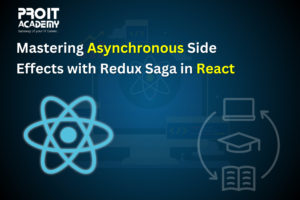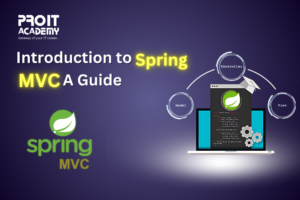Difference Between Python and Ruby
The main difference between ruby and Python will discuss in this article. But let us first look at them separately before diving into the distinction.
What is Python?
An object-oriented programming language combined with dynamic linking and typing, the built-in databases are a perfect way to build applications rapidly. Python provides modules and packages support that enables modularity of the system and re-use of the code.
The programming language is one of the easiest because it requires very few code lines. Its focus is on reading ease, making it a perfect option for beginners.
Python shares with Ruby similar characteristics. Python is an encoded, high-level, general-purpose language created four years before Ruby. The language is also typed for the garbage collection dynamically.
Python is designed in the philosophy of coding by Guido van Rossum. Code readability is also emphasized in many Python programming languages.
E.g., although Python is mainly object-oriented, it is compatible with the procedural programming framework. This framework is designed to help developers to write more straightforward, more logical code.
Another function of formal programming is completely supported by Python – where procedural programming is part of this framework. The framework of the programming focuses on clarity and accuracy through encouraging organized control flows. Python also has functional programming capabilities.
Perhaps the main feature of Python is the use of significant space. White space is usually used as spacing characters with no value like entering, tab, or space bar on the keyboard.
This whitespace is called significant in Python because it denotes code blocks. Curly brackets are commonly used in other languages. While some guys hate Python whitespace, others appreciate it. Python robust library is another feature that many people admire.

Book Your Time-slot for Counselling !
Advantages of Python
Python is popular for its simplicity and broadness. The result is an easy language with a multi-dimensional purpose.
Extensive
The inclusion of third-party modules and library help simplify introducing such features and functionality to a developer program. There are about 300,000 packages in the Python Package Index (PyPi).
Easy
Like Ruby, Python is simple to read and write. The syntax favors readability and needs fewer lines of code to perform the same tasks than languages such as Java or C.
Portable
To make Python compatible on various platforms, you don’t have to change your code. Python is portable and thus runs through a range of operating systems.
Productive
User-friendly data structures such as lists and dictionaries increase the productivity of Python when writing code. Instead of learning to write code, developers can focus on problem-solving.
Become a python developer at Python Classes in Pune.
What Is Ruby?
Ruby is a high-quality programming interpreted language. Yukihiro “Matz,” Matsumoto developed the language in 1995, and he aimed to develop a scripting language for the object.
Ruby and other general-purpose languages are designed for writing applications in a variety of environments. Ruby is used primarily for creating web apps. However, the language is also helpful for data processing, prototyping, and proofs-of-concept.
Ruby is nearly slower than compiled languages as an interpreted language. Before execution, compiled languages are converted into machine code directly. Though interpreted languages are not now translated, they are read and executed lines by lines.
Ruby has several programming paradigms, allowing users to code uniquely. Object-oriented programming is helpful for intuitive interpretations of data by objects.
Functional programming, which focuses on pure functions to write a program, is also possible for Ruby. Procedural programming employs a top-down approach to instructional code to achieve a goal.
Ruby’s dynamic typing feature allows for more lenient rules regarding identifying variable types before their use. The code is concise and easier to write, as a result. On the other hand, static typing has the benefit of being more efficient at detecting type errors.
Ruby has garbage collection for memory management. Essentially, garbage carries out memory allocation tasks automatically so that developers do not need to write code for such tasks. Most of this function includes storing and throwing unused objects, which continue to be used in the program memory.
In addition to its features, Ruby is famous for being an elegant programming language that is simple to write. Many developers compare Ruby to English coding.
What Are the Advantages of Ruby?
The key benefits of Ruby are due to its productive nature. These benefits are reflected in many aspects of its syntax and dynamic skills.
Elegant
Ruby is the first programming language that many programmers learn. It is due to Ruby’s popularity as a simple programming language. The language is simple to understand and strongly matches English.
Intentional
Ruby will always stand out compared to the languages it aspires to be higher than Python and Perl since it was developed before many others. Ruby is more organized than Perl and more object-oriented than Python.
Easy
In Ruby and several different languages, the metaprogramming functionality allows you to anticipate and write code automatically based on the starting input of a developer. It makes it even easier to code in Ruby.
Fast
Ruby will continue to allow you to save time in production after being interpreted. The rate at which developers write code is improved. Developers using Ruby on Rails, a common Ruby-based web framework, report that they spend up to 40% less time developing applications.

Do you need help to create your career path ?
Differences
● Python supports multiple traditions while Ruby supports a single tradition.
● Python will often be used in education, AI, engineering, and scientific computing, while Ruby will use for online and functional programming.
● Python isn’t an entirely object-oriented programming language. Ruby is an object-oriented programming language at the same time.
● A variable is fixed in Python, so you can’t unset it back, while in Ruby, if the variable is in scope, it is present in a symbol table.
● The functions of python lambda are more extensive, while ruby only supports one lambda function.
● Python is very explicit and stylish to read though Ruby often can be tough to debug.
● Python has methods and Ruby functions.
Features of Python
● It’s simple to learn, read, and maintain, and it can run on a variety of hardware platforms while maintaining the same user interface.
● You can use the Python interpreter to include low-level modules.
● Python’s structure and support for massive systems are optimal.
● Python has built-in support for garbage collection.
● It allows you to try and debug in an interactive mode.
● The Python programming language can work with Java, C, and C++ code.
● High-efficiency
● Easy, uncomplicated syntax
● Short compile times
● Easily deployable statically connected binaries
Features of Ruby
● It’s an interpreted language of programming that is generally used and a simple object-oriented language of programming.
● The syntax is like specific languages Perl or C++.
● Ruby can be scalable very well, and significant Ruby systems are easy to maintain.
● It Can use for Internet and Intranet applications development.
● Ruby provides a rich set of integrated features and functions that can operate in Ruby scripts directly.
The difference between Python and Ruby are as follows:
Use cases
Ruby is popular in web application creating organizations. Ruby on Rails programming enables teams to quickly build and focus on business processes rather than scratch coding functions.
Rails have a model–view–controller (MVC) configuration that allows you to keep the details, user interface, and business functions separate. Chef is a Ruby-based configuration management software. Consequently, if you need to do this in Ruby, you’ll need to create a new Chef module.
Django is the most common Python MVC frame, but Python is well known in the field of web applications as well. For Example, the Pandas library and several mathematical libraries like Stats model and NumPy for data munging and planning. TensorFlow is typical for machine learning, and for data visualization, Matplotlib can be very powerful. SciPy, which offers the tools to solve mathematical functions used to make engineering students sweat.
Flexibility
In this regard, Ruby inherited Perl’s ideology: there are multiple ways. There are several different methods in Ruby for accomplishing a task always. Depending on who writes the code, it may add unnecessary complexity and obfuscation.
Python, though, is following an approach where simplicity is more important than complexity. So while Python code is certainly not the most flexible, it is probably more readable for an inexperienced programmer.
Popularity
In October 2018, Ruby’s usage steadily decreased from the fifth position in 2014 to tenth place in 2018, in the top 10 languages. However, Python has continued to be prominent, moving from the fourth most frequently used language in 2014 to the third level in 2015.
Reusable code
A ready-to-use and publicly accessible code is a relevant consideration when deciding on a programming language. Python calls them modules. They can access via PyPI, where more than 150,000 modules can search. On the other hand, Ruby reusable coding is known as Gems, and almost 150,000 gems are present. But filtering is the differentiating factor; PyPI enables filtering categories such as development status, which is more accessible than comparing multiple libraries and evaluating their code manually.
Both solutions have painless dependencies installation within the environment when it comes to packaging and automatic dependence resolution. Another advantage of Python is that you can isolate various Python interpreters from virtualenv versions. Ruby is similar in rbenv or rvm, but it’s a little cumbersome. You can better evaluate this in the context of your cases and the reusability of the code.
Learning curve
Python is easier to learn. The syntax is more readable and more accessible for the beginner to understand. But then you must consider what framework to use beyond the bare-bones Python.
Ruby can take longer to learn, but Ruby’s built-in features on Rails – such as scaffolding and Active Record – speed up development. You can create a CRUD application with API access in a few minutes as soon as you know them.
Community
The active and dedicated communities support Ruby and Python both. Both languages now provide a wide variety of high-quality documents and educational materials that are easily accessible online. Yet Python’s society is far broader and inclusive than Ruby. Python has found use in a variety of different cases – Python is all-pervasive – from academics to data science.
Machine Learning
Python is the go-to language for artificial intelligence due to its libraries (AI). Python is used to create most AI algorithms, so programmers working on machine learning should be fluent.
Ruby is, on the other hand. While Ruby’s machine learning and AI libraries have potential, they must tweak to compete with Python in this area. Ruby will not be able to take the place of Python soon.
Testing Environment
Python and Ruby want to assert their language as a standard for test-driven development. PyTest tests and unit tests in Python encourage developers by small but regular tests to write better code.
However, Ruby has one feature that Python does not do is a behavior-driven development (BDD). This method of testing, carried out on Ruby vis RSpec, is done by comparing the codebase with a list of developers’ requirements.
Similarities
Is ruby similar to Python? Python and Ruby have multiple similarities like
● The programming languages are scripting, cross-platform, server-side, general-purpose.
● Both are licensed under open-source licenses, i.e., licenses accepted by OSI (Ruby) and FSF (Python). You do not have to pay any license fees for using the software or the distribution.
● Amazon Web Services offers both languages through the Lambda function (AWS).
Should you learn Python or Ruby first?
From 2010 to 2016, Ruby saw an increase in usage, but it seems like Python’s market trend. Here is a way to help you decide: Learn Ruby if you already have a specific client, job, or project that needs you to know Ruby. If it doesn’t, first learn Python. Keep in mind that Python 2 and Python 3 distinguish.
Conclusion
You can do anything in Ruby on Rails, in Python, and Django also. Which better framework is not a matter of ability? The best question can be: What is the team’s best language?
Then try prioritizing Ruby on Rails if you intend to stick to creating web applications. The community is good and always on the edge of the bleeding if you are interested in developing web applications but want to learn a language that can be more commonly used and more knowledgeable then you should learn Python. Also to learning these Job Oriented Courses like Python and Ruby you can visit us.












